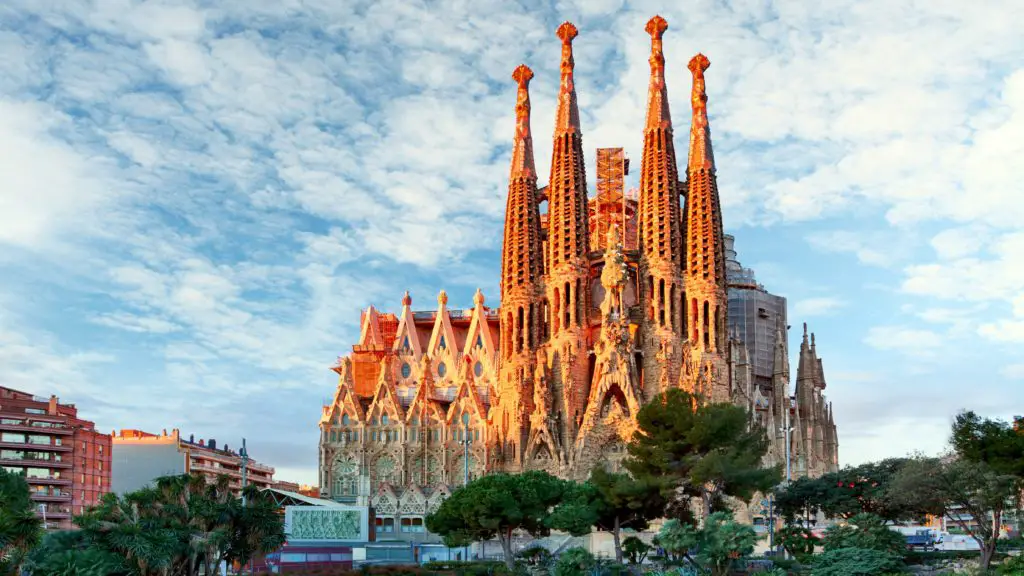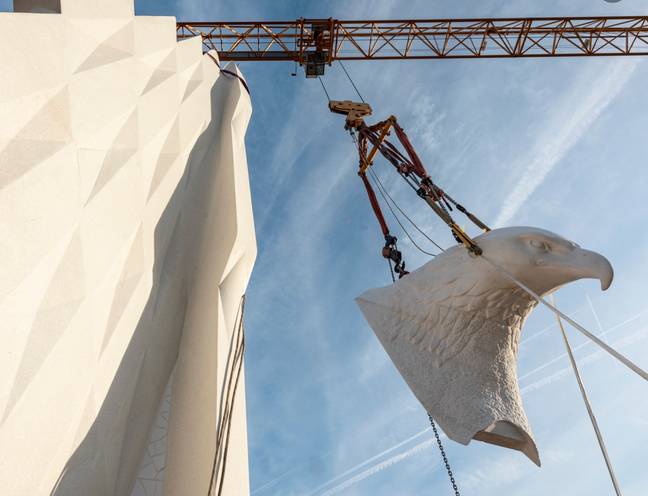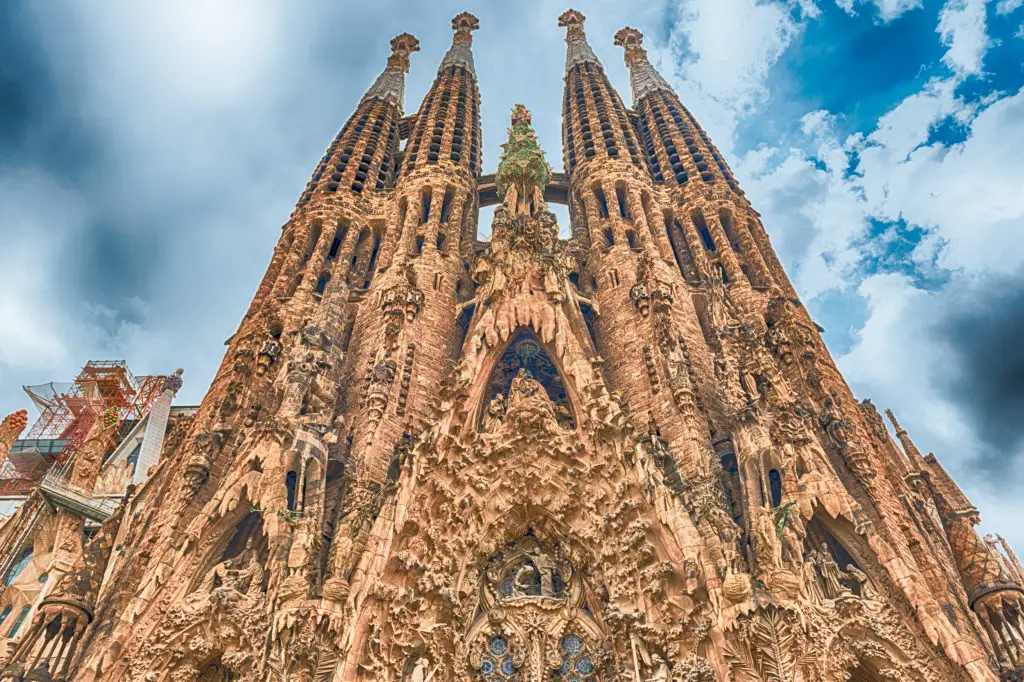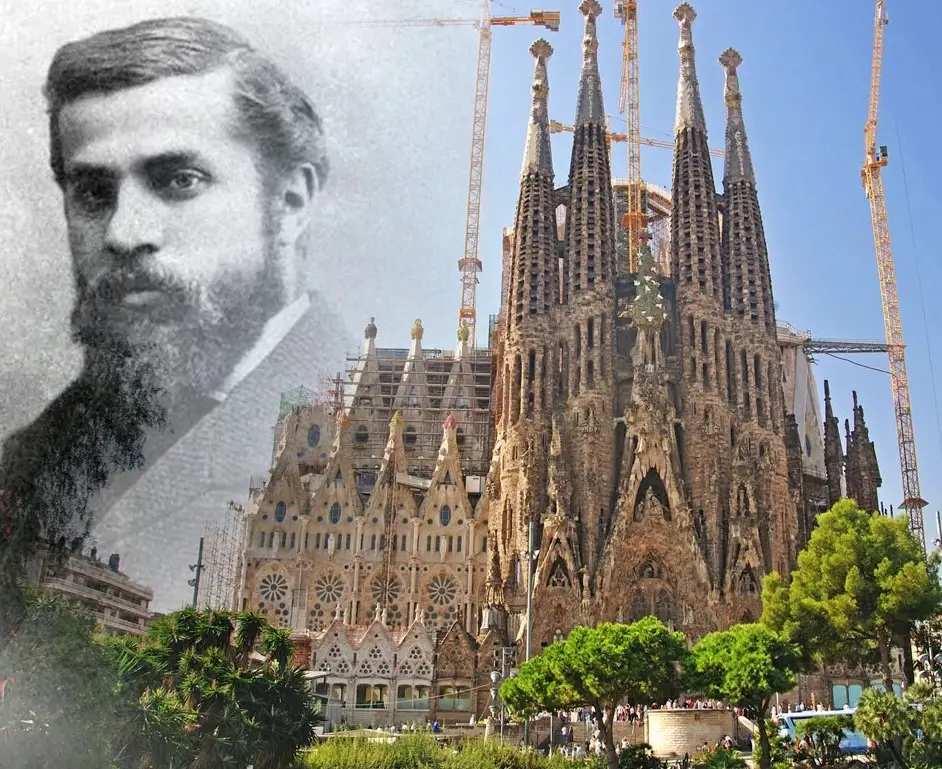After a remarkable journey spanning over 140 years, the Sagrada Familia, situated in the vibrant city of Barcelona, Spain, is drawing closer to its long-anticipated completion. This internationally acclaimed basilica stands as an awe-inspiring embodiment of architectural excellence and ingenuity.
The construction of the Sagrada Familia has been characterized by a meticulously paced evolution, a testament to the unwavering commitment to its visionary architect, Antoni Gaudí’s, extraordinary design. Its distinct blend of Gothic and Art Nouveau styles has earned it accolades, making it a revered icon in the world of architecture.

What truly sets the Sagrada Familia apart is its ability to endure the test of time, continually enchanting both visitors and locals alike. In an era marked by rapid urban development and the advent of modern marvels, this grand basilica stands as a resolute reminder of the enduring power of timeless design and profound artistic vision. Its majesty continues to capture the collective imagination of millions worldwide, offering a glimpse into the transcendence of architectural genius across generations. As the Sagrada Familia approaches its long-awaited completion, its significance as a testament to human creativity and determination remains undiminished.
Reaching a Major Milestone
Just recently, a significant milestone was celebrated when the church’s four iconic towers were officially completed. These towers symbolize the four evangelists – Matthew, Mark, Luke, and John – who are credited with writing the gospels that tell the story of Jesus’ life. Each tower is intricately designed and represents the unique contributions of the respective evangelist.

As a tribute to Matthew and John, two sculptures were added to the church. Matthew is depicted as a statue of a man, while John’s tower is marked with an eagle. These sculptures joined previously installed symbols of Mark (lion) and Luke (ox), which were unveiled last year.
A Testimony to the Architectural Vision of Antoni Gaudí
The Sagrada Familia has a unique history that began in 1882 when the first stone was laid. The visionary behind this masterpiece was the renowned Spanish architect, Antoni Gaudí. Unfortunately, Gaudí passed away before he could witness the completion of his magnum opus. Today, he rests in the church’s crypt, his final resting place as construction continues on his visionary creation.

Gaudí’s vision for the Sagrada Familia was grand and ambitious – a towering church with 18 spires, each representing a different biblical figure. With the completion of the evangelist towers, the focus now shifts to the central tower dedicated to Jesus Christ. This tower, expected to be the tallest at 172.5 meters (566 feet), will be topped with a 17-meter-tall (56-foot) cross.

Explore and Experience the Sagrada Familia’s Splendor
The Sagrada Familia’s splendor and architectural greatness continue to captivate visitors who flock to Barcelona. This monumental structure is not only an awe-inspiring sight but also a testament to the creativity and determination of those involved in its construction.

When you visit the Sagrada Familia, take the time to marvel at the attention to detail in its design, from the intricate sculptures to the soaring spires. Explore the interior, where you’ll find stunning stained glass windows that flood the space with vibrant colors and play of light.
For an enhanced experience, consider taking a guided tour or audio guide, which will provide you with insights into the history, symbolism, and architectural innovations of the Sagrada Familia.
What does the Sagrada Familia symbolize?
The Sagrada Familia, or the Basilica and Expiatory Temple of the Holy Family, is an iconic architectural masterpiece located in Barcelona, Spain. Designed by the renowned Catalan architect Antoni Gaudí, this awe-inspiring basilica holds a profound and multifaceted symbolism that transcends its physical structure. This list explores the various symbolisms associated with the Sagrada Familia:
- Religious Devotion: The primary and most evident symbolism of the Sagrada Familia is its dedication to the Holy Family – Jesus, Mary, and Joseph. It serves as a place of worship and devotion, emphasizing the importance of faith and spirituality in the lives of individuals.
- Biblical Narratives: The façades of the Sagrada Familia are adorned with intricate sculptures that depict scenes from the Bible. These sculptures symbolize the teachings and stories found within the Christian tradition, offering visitors a visual narrative of religious history.
- Nativity Facade: The Nativity Facade, the most developed during Gaudí’s lifetime, represents the birth of Jesus. Its sculptures symbolize the themes of birth, life, and the joyous moments in the Christian narrative.
- Passion Facade: In contrast to the Nativity Facade, the Passion Facade portrays the suffering and crucifixion of Jesus. This part of the basilica symbolizes the sacrifice and redemption central to Christian beliefs.
- Glory Facade (Future): The unfinished Glory Facade represents the final judgment, resurrection, and entrance to the heavenly kingdom. It symbolizes the ultimate goal of Christian life – salvation and eternal bliss.
- Nature and Creation: Gaudí’s innovative use of organic and natural forms throughout the Sagrada Familia symbolizes the beauty and wonder of God’s creation. The columns resemble tree trunks, and the ceiling evokes a forest canopy, emphasizing the divine presence in the natural world.
- Light and Enlightenment: The interior of the basilica is bathed in an ethereal, kaleidoscopic light that symbolizes spiritual illumination. The intricate stained glass windows and play of light create an atmosphere of transcendence, inviting contemplation and introspection.
- Unity of Faith and Science: Gaudí’s fusion of artistic innovation and architectural precision symbolizes the harmonious coexistence of faith and science, showing that these seemingly distinct realms can exist in unity.
- Time and Endurance: The long and ongoing construction of the Sagrada Familia symbolizes the enduring nature of faith and commitment. It serves as a reminder that great works take time and that dedication to a higher purpose transcends generations.
- Cultural Identity: As a symbol of Catalonia, the Sagrada Familia represents the region’s distinct cultural and artistic heritage. It stands as an emblem of pride and identity for the people of Catalonia.
- Architectural Innovation: Gaudí’s groundbreaking architectural techniques and innovations symbolize a departure from conventional design, showcasing the possibility of pushing boundaries and creating a unique, transcendent vision.
- Global Icon: The Sagrada Familia has become a symbol of Barcelona and Spain worldwide. It attracts millions of visitors annually and symbolizes the power of art and architecture to unify people from diverse backgrounds.

The Sagrada Familia is a remarkable embodiment of diverse symbolisms, transcending religious devotion to encompass art, nature, culture, and enduring human spirit. Its significance extends far beyond its physical structure, making it a timeless masterpiece that continues to inspire and captivate individuals from all walks of life.
A Timeless Symbol of Architectural Brilliance
The Sagrada Familia stands as an enduring and iconic symbol of architectural brilliance, seamlessly fusing art, faith, and innovation. Its forthcoming completion will stand as a momentous milestone, not only for Barcelona but for the entire world, cementing Gaudí’s lasting legacy and the perpetual marvel of this exceptional church. As you stand in awe before the Sagrada Familia, take a moment to let its grandeur and magnificence leave an indelible mark on your memory, serving as a poignant reminder of the immense power of human creativity and unwavering dedication.

Sources:
The Evangelists: How they are represented at the Sagrada Familia
Barcelona’s Sagrada Familia has nearly been completed
Gaudí passed away

This Site Was Inspired By An Interest in Protecting the Environment:
We had the privilege and joy of learning from Dr. Charlie Stine who instilled a love for the natural world through incredible field trips with the Johns Hopkins Odyssey Certificate program in Environmental Studies. At the time, the program was endorsed by the Maryland Department of Natural Resources. Sadly, after Dr. Stine retired, the program was phased out. We hope that we honor his legacy by shining a bright light on environmental issues and sharing good news about the success of various conservation programs when possible.
